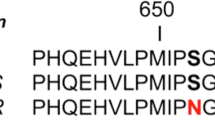Abstract
Herbicides belonging to the chemical group imidazolinones and the quinclorac herbicide are important to control weeds in flooded rice. The objective of this research was to evaluate the interaction of imidazolinones with quinclorac to control Cyperus iria resistant to acetolactate synthase inhibitors (ALS). It was conducted two experiments in a greenhouse in a completely randomized design with four replications. Colby’s methodology was used for experiment 1, through the application of quinclorac isolated and in mixture with herbicides imazethapyr, imazapyr e imazapic. The experiment 2, using dose–response curves, tested the herbicides quinclorac isolated and in different mixtures with the herbicide imazethapyr. For experiment 1, the expected and observed averages were compared. For experiment 2, the results were analyzed using the sigmoidal logistic model. Additive is the main interaction of mixtures of quinclorac with different herbicides from the chemical group of imidazolinones to control resistant C. iria. Mixing with imazethapyr at different proportions can cause an additive effect with quinclorac at higher doses.

Similar content being viewed by others
References
Arnhold E (2013) Pacote em ambiente R para análise de variância e análises complementares. Brazilian Braz J Vet Res an Sci 50:488–492
Awan TH, Cruz PCS, Chauhan BS (2015) Growth analysis and biomass partitioning of Cyperus iria in response to rice planting density and nitrogen rate. Crop Prot 74:92–102
Beckie HJ, Reboud X (2009) Selecting for weed resistance: herbicide rotation and mixture. Weed Technol 23:363–370
Blouin DC, Webster EP, Zhang W (2004) Analysis of synergistic and antagonistic effects of herbicides using nonlinear mixed-model methodology. Weed Technol 18:464–472
Chiapinotto DM, Schaedler CE, Fernandes JP, Andres A, Lamego FP (2017) Cross-resistance of rice flatsedge to als-inhibiting herbicides. Planta Daninha 35:e017166827
Colby SR (1967) Calculating synergistic and antagonistic responses of herbicide combinations. Weeds 15:20–22
Dhammu HS, Sandhu KS (2002) Critical period of Cyperus iria L. competition in transplanted rice. Proc. 13th Australian Weeds Conference weeds" threats now and forever. Plant Protection Society of WA, Perth, pp 79–82
Eberhardt DS, Oliveira Neto AM, Noldin JA, Vanti RM (2016) Barnyardgrass with multiple resistance to synthetic auxin ALS and ACCase Inhibitors. Planta Daninha 34:823–832
Frans RE (1972) Measuring plant responses. In: Wilkinson RE (ed) Research methods in weed science. Southern Weed Science Society, Puerto Rico, pp 28–41
Feijó ÂDR, Fipke MV, Silveira LP, Camargo ER, Kruse ND, Avila L (2020) Interaction between saflufenacil and imazapyr+ imazapic in the management of barnyardgrass and weedy rice and selectivity for irrigated rice. Cienc Rural 50:e20190821
Galinato MI (1999) Upland rice weeds of South and Southeast Asia. International Rice Research Institute, Makati, p 156
Grossmann K (2010) Auxin herbicides: current status of mechanism and mode of action. Pest Manag Sci 66:113–120
Heap I. 2019. The International Survey of Herbicide Resistant Weeds. Online. Internet. www.weedscience.org. 16 Sept 2019.
Hernández AF, Gil F, Lacasaña M (2017) Toxicological interactions of pesticide mixtures: an update. Arch Toxicol 91:3211–3223
Kalsing A, Goulart I, Mariot C, Menezes VG, Matzenbacher F, Merotto Junior A (2019) Spatial and temporal evolution of imidazolinone-resitant red rice in “Clearfield” rice cultivations. Pesq Agropec Bras 54:2019
Matzenbacher F, Kalsing A, Dalazen G, Markus C, Merotto Junior A (2015) Antagonism is the predominant effect of herbicide mixtures used for imidazolinone-resistant barnyardgrass (Echinochloa crus-galli) control. Planta Daninha 33:587–597
Norsworthy JK, Bangarwa SK, Scott RC, Still J, Griffith GM (2010) Use of propanil and quinclorac tank mixtures for broadleaf weed control on rice (Oryza sativa) levees. Crop Prot 29:255–259
R Core Team, R. (2019) A language and environment for statistical computing. R Foundation for Statistical Computing. Vienna, Austria.
Riar DS, Tehranchian P, Norsworthy JK, Nandula V, McElroy S, Srivastava V, Chen S, Bond J, Scott RC (2015) Acetolactate synthase–inhibiting, herbicide-resistant rice flatsedge (Cyperus iria): cross-resistance and molecular mechanism of resistance. Weed Sci 63:748–757
Ritz C, Streibig JC (2005) Bioassay analysis using R. J Stat Softw 12:1–22
Sørensen H, Cedergreen N, Skovgaard IM, Streibig JC (2007) An isobole-based statistical model and test for synergism/antagonism in binary mixture toxicity experiments. Environmental and Ecological Statistics 14(4):383–397. https://doi.org/10.1007/s10651-007-0022-3
Sudianto E, Beng-Kah S, Ting-Xiang N, Saldain NE, Scott RC, Burgos NR (2013) Clearfield® rice: Its development, success, and key challenges on a global perspective. Crop Prot 49:40–51
Ulguim AR, Silva BM, Agostinetto D, Avila Neto RC, Zandona RR (2019) Resistance mapping of the genus cyperus in rio grande do sul and selection pressure analysis. Planta Daninha 37e019186679. https://doi.org/10.1590/s0100-83582019370100062
Yasuor H, Milan M, Eckert JW, Fischer AJ (2012) Quinclorac resistance: a concerted hormonal and enzymatic effort in Echinochloa phyllopogon. Pest Manag Sci 68:108–115
Zhou Q, Liu W, Zhang Y, Liu KK (2007) Action mechanisms of acetolactate synthase-inhibiting herbicides. Pestic Biochem Physiol 89:89–96
Acknowledgements
This study was not particularly founded by any specific research agency.
Author information
Authors and Affiliations
Contributions
All the authors contributed equally with this work.
Corresponding author
Ethics declarations
Conflict of interests
We have no conflict of interest to declare.
Additional information
Publisher's Note
Springer Nature remains neutral with regard to jurisdictional claims in published maps and institutional affiliations.
Rights and permissions
Springer Nature or its licensor holds exclusive rights to this article under a publishing agreement with the author(s) or other rightsholder(s); author self-archiving of the accepted manuscript version of this article is solely governed by the terms of such publishing agreement and applicable law.
About this article
Cite this article
Avila Neto, R.C., de Souza, P.M., Rubert, J. et al. Interaction between quinclorac and imidazolinones in the control of resistant Cyperus iria to ALS inhibitors. J. Crop Sci. Biotechnol. 26, 161–166 (2023). https://doi.org/10.1007/s12892-022-00169-x
Accepted:
Published:
Issue Date:
DOI: https://doi.org/10.1007/s12892-022-00169-x




